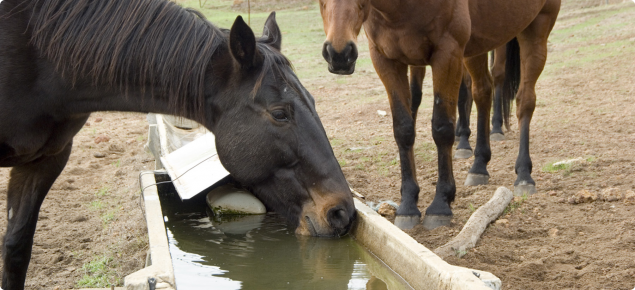What is strangles?
Strangles is an infectious, bacterial disease of horses. While it is more common in younger horses, it may affect any age group not previously exposed to the disease.
How do horses become infected?
The disease spreads easily via contact between infected horses or by use of shared drinking or feed troughs.
The bacteria that causes strangles, Streptococcus equi, can persist in the environment for several weeks and cold conditions favour its spread. Horses can catch the disease from contaminated premises or equipment for several weeks after the last case and affected horses are infectious for at least four weeks after they stop showing visible signs.
The incubation period for strangles is about 3–6 days but can vary from 2–15 days. It is possible for your horse to become infected with strangles at an event and be back on the home property before it shows signs of illness. This is why it is important to isolate horses returning from events.
What are the signs of strangles?
Infected horses become sick quite rapidly with a high temperature of up to 41 degrees Celsius and they may have a slight cough.
The upper respiratory tract becomes inflamed, making swallowing painful, so there will be loss of appetite and sometimes extension of the head and neck to ease the pain.
A watery discharge from the nose is followed by a copious, yellow pus-like discharge.
At about 10–14 days, the lymph nodes around the head and neck swell, become abscesses and then rupture with large quantities of creamy, yellow pus.
Chronic inflammation of the guttural pouch or sinuses may occur and sometimes the infection can attack the muscles and lining of the heart.
What is the treatment for strangles?
Isolate infected horses and do not work them for up to three months. Provide warm, well-ventilated shelter.
See your veterinarian to obtain antibiotics to treat the infection and for anti-inflammatory medication to ease the pain if required. Severely affected horses may require intravenous fluid therapy and feeding by stomach tube. Abscesses may also need to be opened and drained.
Gently clean the eyes and muzzle several times a day to remove accumulated pus.
Provide soft, moist, palatable feed to encourage eating.
How can I prevent strangles in my horse?
Vaccination can prevent strangles. The vaccine can be given alone or in combination with the tetanus vaccine. The vaccination course is for horses aged three months or more. Give three doses initially at intervals of two weeks or more and an annual booster.
Adopting good biosecurity practices (see below) when taking your horse to events or shared agistment, where they mix with other horses, is as important as vaccination in preventing strangles in your horse.
Where can I obtain more information about biosecurity?
More information on how to keep your horses healthy is available in the biosecurity checklist Keeping horses healthy.
Your private or local DAFWA veterinarian can also provide information about horse biosecurity.

